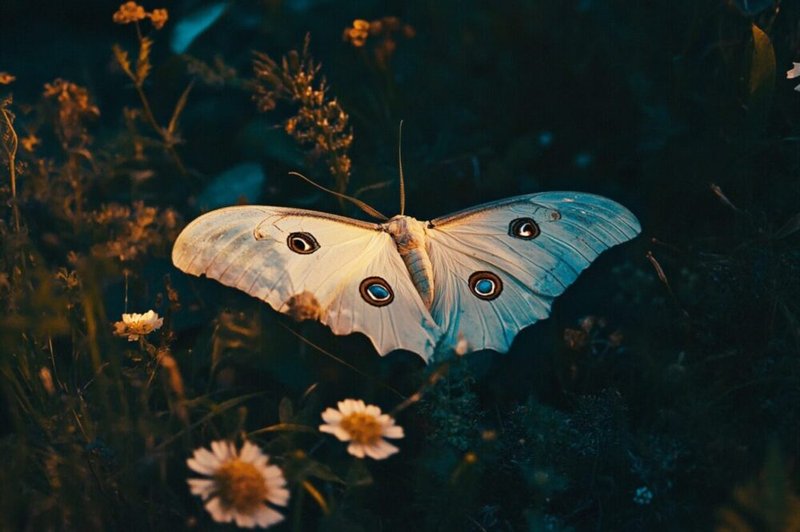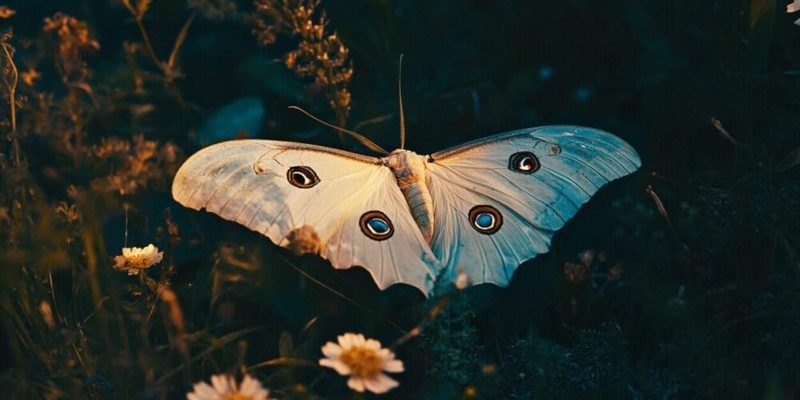
Moths, with their soft, powdery wings and nocturnal habits, often get overshadowed by their flashier relatives, the butterflies. However, both have rich symbolic meanings that reflect aspects of our human experience. Just as a moth is drawn to light, people are often drawn to deeper truths and revelations. By exploring the layers of moth symbolism, we’ll uncover ways it can illuminate our understanding of life and ourselves.
Moths as Symbols of Transformation
One of the most striking aspects of moth symbolism is their connection to transformation. Think about the lifecycle of a moth: it starts as a humble caterpillar, goes through metamorphosis, and emerges as a beautiful creature. This process mirrors our own potential for change, growth, and rebirth.
In many cultures, this transformation is viewed as a reminder that life is ever-evolving. Just like the moth, we can shed old layers and emerge stronger. For instance, in Native American traditions, the moth’s journey reflects personal evolution and spiritual growth. The message is clear: no matter how dark things may seem, there’s always an opportunity for renewal.
You might be wondering how this relates to daily life. Well, consider moments of personal struggle or change. Maybe it’s a job loss or a relationship ending. These experiences can feel heavy, but like the moth, there’s potential for emerging stronger and wiser.
The Moth’s Connection to Intuition and the Subconscious
Another captivating aspect of moth symbolism is its relationship with intuition and the subconscious mind. Moths are often drawn to light, which can symbolize truth and enlightenment. Similarly, many cultures view the pursuit of knowledge and understanding as a guiding light in life.
In some traditions, like the one found in Eastern philosophies, the moth represents the soul’s journey towards enlightenment. Just think about those moments when you have a gut feeling about something. That instinct can be seen as a light directing you, just as moths follow the moon or other sources of brightness.
This connection to intuition encourages us to trust our instincts. The next time you’re faced with a tough decision, tap into that inner voice. It can guide you toward choices that resonate with your true self. Just remember, like the moth, sometimes it takes a leap of faith to find your way.
Moths as Messengers of Change
In various cultures, moths are also seen as messengers of change. This idea often ties back to their transformation symbolism but focuses more on the messages they bring during pivotal moments. Picture this: you’re going through a tough time, and a moth appears right in front of you. Many people interpret this as a sign that change is on the horizon.
In Japanese folklore, moths are thought to be spirits of the deceased. Their appearance can signal the presence of departed loved ones, reminding us that although change can be difficult, we’re never truly alone. It’s a comforting thought, isn’t it?
So, the next time you see a moth fluttering about, pause for a moment. What changes are happening in your life? Could this little creature be a nudge from the universe to embrace those developments?
Symbolism of the Moth in Art and Literature
Moths have also made their mark in art and literature, often representing themes of mystery, beauty, and even ephemeral nature. They inspire artists and writers to explore deeper emotions and complex ideas. Think of them as the gentle, elusive muse whispering secrets, urging us to look closer at life’s beautiful nuances.
In literature, moths can symbolize fragility and transience, much like life itself. You might recall the famous poem “The Moth” by John Keats, where the moth becomes a metaphor for fleeting beauty and the inevitability of change. This poetic imagery adds layers of meaning and emotion that resonate with readers on a profound level.
Perhaps you have a favorite book or poem where moths appear. Reflecting on these moments might help you see how this tiny creature serves as a lens for understanding our human experiences.
Moths in Folklore and Mythology
Throughout history, moths have woven their way into folklore and mythology, often carrying significant symbolic weight. In some cultures, they are considered omens, while in others, they’re seen as protectors or guides.
For instance, in ancient Egypt, moths were associated with rebirth and regeneration, tied to their belief in the afterlife. The Egyptians saw them as guardians of the soul, which adds a layer of reverence to these delicate creatures. Meanwhile, in Celtic tales, moths are often linked with the spirit world, acting as messengers between the living and the deceased.
Such beliefs remind us that moths have been viewed as more than mere insects; they are part of a larger spiritual tapestry. When you encounter a moth, consider what stories and symbols it carries with it, connecting you to ancient traditions and wisdom.
Environmental Significance and Conservation
Lastly, let’s touch on the environmental significance of moths. These creatures play crucial roles in their ecosystems as pollinators and food sources for other wildlife. Their presence indicates a healthy environment, making them vital for biodiversity.
However, moth populations are declining, primarily due to habitat loss and pesticide use. This decline not only impacts moths but also disrupts the balance of our ecosystems. Protecting moth habitats is essential for maintaining this delicate balance.
By conserving moth populations, we preserve the symbolism they carry. So next time you see a moth, remember it’s not just a beautiful insect—it’s also a vital part of our world that deserves protection.
In summary, moths are rich in cultural symbolism, representing transformation, intuition, and change across various traditions. They remind us to trust our instincts, embrace personal growth, and recognize the beauty in life’s transitions. By valuing and conserving these delicate creatures, we not only honor their symbolic meanings but also contribute to the health of our environment. Next time you spot a moth, see it as a gentle nudge toward introspection and growth.

